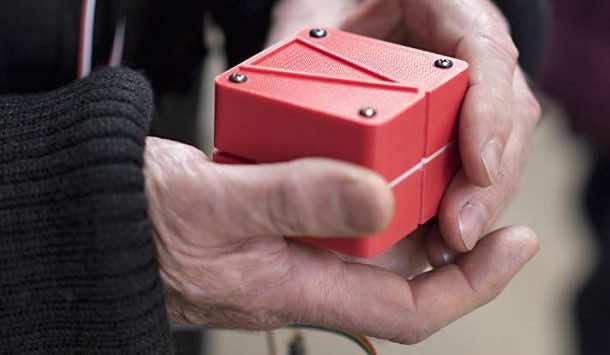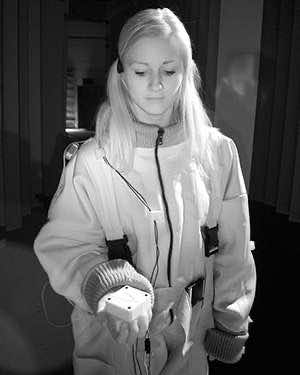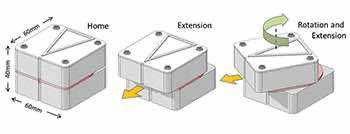Navigation has always been essential for travelling and locomotion whether we talk about the centuries old sextant or the modern age GPS system. Recently a new navigation device was introduced by Yale University engineer Adam Spiers- a postdoctoral associate in the robotics lab, while working on a London-based production of “Flatland.” It is an interactive play based on Edwin A. Abbott’s 1884 story of a two-dimensional world where the audience were guided by Spiers’ new device- The Haptic Sandwich. Copies of this device were given to each member in order to guide them through a 112 sq. meter dark space to large tactile structures accompanied by audio narration from the production’s plot.

About the Device:
Guiding the audience through the darkness were handheld, shape-shifting cubes that Spiers designed and created with 3D printing technology. Being a haptics expert (someone who designs objects based on the sense of touch), Spiers named the device as the Haptic Sandwich at first but later leaned towards Animotus. During the play, Animotus is a wireless-connected, 60x60x40mm dimensional cube that acts like a sort of haptic compass. It is user-friendly and minimal time is required in understanding the function and operation of this device.

How Animotus Works:
The device is a shape-shifter. During the “Flatland” production, audience members wore large suits, which housed equipment to track their movements. The user’s position in the environment determines the shape of the wireless device. The top half of the cube twists to direct users toward their next destination and extends forward or backward to indicate the distance to reach it. Rather than look at the device, as with a smartphone, users know where to go by feeling the changing shapes.
“The simple idea is that when you’ve arrived at your target destination, it becomes a little cube again,” said Spiers, haptics expert.

Future of Animotus, the Shape-Shifting Cube:
Most haptics-based devices rely on vibration, which can get annoying. Location devices with audio prompts can be even more distracting. Spiers said building the device took some trial and error because there was hardly any device resembling it quoting, “Shape-changing is pretty new in haptics, so not a lot of people have done it before.”
It’s accurate within about 30 centimetres, Spiers says, but isn’t calibrated so precisely as to help you avoid obstacles such as a coffee table or rogue shoe splayed out on the floor. In general, it selects the most direct route from point A to point B, but it will not guide you to go through a wall either. Spiers is currently working on better localization of the device. He also said that it was surprising how efficiently audience members travelled between the points on their routes, walking only 0.3 meters less per second than average.
“That implies that they were pretty confident as they were moving around,” he said. “They only slowed down a little bit, despite being guided through an unknown dark space by a wholly unfamiliar technology.”
“You hear about people walking into fountains or crashing into lampposts because they’re staring at their phones,” Spiers notes. The device could eliminate the necessity of hunching over your phone’s map. And he also hopes that it could be a useful tool for visually impaired pedestrians who are used to tuning into aural instructions. “It would just work in the background the whole time,” he says. “It wouldn’t obscure the sounds of the city, which is one way that a visually impaired person appreciates the world.
Spiers thinks the Animotus has the potential to guide pedestrians and hikers while allowing them to fully appreciate their surroundings. Although the device is currently catering to indoor navigation only, it is being manipulated to work in urban environments as well, in the near future.
The Research paper published on shape-changing navigation technology can be accessed here


